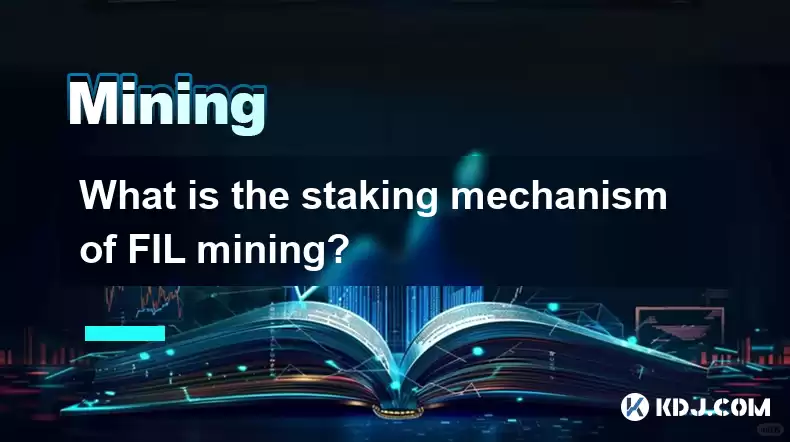-
 Bitcoin
Bitcoin $115100
1.27% -
 Ethereum
Ethereum $3675
2.71% -
 XRP
XRP $2.995
1.45% -
 Tether USDt
Tether USDt $1.000
0.02% -
 BNB
BNB $769.8
2.64% -
 Solana
Solana $168.0
3.25% -
 USDC
USDC $0.9999
-0.01% -
 TRON
TRON $0.3371
1.48% -
 Dogecoin
Dogecoin $0.2051
3.36% -
 Cardano
Cardano $0.7394
2.30% -
 Hyperliquid
Hyperliquid $38.15
0.42% -
 Stellar
Stellar $0.3966
-0.36% -
 Sui
Sui $3.486
2.93% -
 Chainlink
Chainlink $16.72
2.52% -
 Bitcoin Cash
Bitcoin Cash $568.0
4.36% -
 Hedera
Hedera $0.2440
2.59% -
 Ethena USDe
Ethena USDe $1.001
0.04% -
 Avalanche
Avalanche $22.16
2.06% -
 Litecoin
Litecoin $119.1
-0.73% -
 UNUS SED LEO
UNUS SED LEO $8.991
0.04% -
 Toncoin
Toncoin $3.232
-0.39% -
 Shiba Inu
Shiba Inu $0.00001233
2.82% -
 Uniswap
Uniswap $9.717
2.53% -
 Polkadot
Polkadot $3.664
1.85% -
 Dai
Dai $1.000
0.01% -
 Monero
Monero $281.2
-3.89% -
 Bitget Token
Bitget Token $4.350
1.55% -
 Cronos
Cronos $0.1428
5.07% -
 Pepe
Pepe $0.00001050
3.68% -
 Aave
Aave $262.3
3.54%
What is the staking mechanism of FIL mining?
Filecoin (FIL) staking secures the network, rewarding storage providers who lock up FIL tokens. Multiple staking methods exist—direct staking, pools, or exchanges—each with varying rewards, risks (including gas fees), and technical requirements. The staked FIL amount influences rewards and network influence.
Mar 22, 2025 at 10:08 pm

Key Points:
- Filecoin (FIL) staking is crucial for network security and incentivizes storage providers.
- Staking involves locking up FIL tokens to secure the network and earn rewards.
- There are various ways to stake FIL, including through dedicated pools and exchanges.
- Understanding gas fees and potential risks associated with staking is vital.
- The amount of FIL staked impacts the reward potential and network influence.
What is the Staking Mechanism of FIL Mining?
Filecoin (FIL) employs a unique staking mechanism integral to its proof-of-replication consensus mechanism. Unlike traditional Proof-of-Work, Filecoin incentivizes storage providers to honestly contribute to the network's decentralized storage system. This is achieved through a sophisticated system of staking and rewards. Essentially, miners (storage providers) must lock up a certain amount of FIL tokens as collateral. This collateral acts as a guarantee of their commitment to the network and a deterrent against malicious behavior. The more FIL staked, the more storage capacity a miner can offer and the higher their potential rewards.
How Does Staking Secure the Filecoin Network?
The staking mechanism is central to Filecoin's security. By requiring miners to stake FIL, the network discourages malicious actors from attempting to compromise its integrity. A miner attempting to cheat – by, for instance, falsely claiming to store data – risks losing their staked FIL. This economic penalty incentivizes honest behavior and contributes to the network's overall robustness and reliability. The large amount of FIL locked up as collateral acts as a significant deterrent against attacks.
Different Ways to Stake FIL:
There are several methods for participating in FIL staking. You can choose to stake directly through a Filecoin storage provider, joining a dedicated staking pool, or leveraging the services of cryptocurrency exchanges that offer staking options. Each method has its own advantages and disadvantages regarding ease of use, potential rewards, and risk levels. Direct staking often offers higher rewards but requires more technical expertise. Staking pools offer simpler participation but might entail sharing rewards among pool members. Exchange staking provides convenience but often comes with lower returns.
- Direct Staking: This involves directly interacting with the Filecoin network using specialized software or a dedicated node. It requires a deeper understanding of the Filecoin protocol and carries more technical risk. However, it often yields the highest rewards.
- Staking Pools: These pools aggregate the FIL from multiple users to participate in staking. This simplifies the process and reduces the technical barrier to entry. Rewards are typically distributed proportionally to the amount of FIL staked by each participant.
- Exchange Staking: Many cryptocurrency exchanges offer staking services for FIL. This is the most user-friendly option, requiring minimal technical knowledge. However, returns are usually lower than direct staking or staking pools due to exchange fees and commissions.
Understanding Gas Fees and Risks:
Gas fees are transaction fees paid on the Filecoin network. These fees are incurred when participating in staking, particularly when initiating or withdrawing staked FIL. Gas fees can vary depending on network congestion and transaction complexity. It's essential to understand and budget for these fees. Furthermore, staking involves risks, such as the potential loss of staked FIL due to network issues, malicious activity, or changes in FIL's price.
The Impact of the Amount of FIL Staked:
The quantity of FIL a miner stakes directly impacts their influence within the Filecoin network. A larger stake grants a miner a higher chance of being selected to participate in storage deals, resulting in increased earning potential. Conversely, a smaller stake reduces the likelihood of being selected, leading to lower rewards. The amount of FIL staked also influences the miner's voting power within the network's governance mechanisms.
What are the rewards for staking FIL?
Rewards for staking FIL are primarily earned through successful storage deals. Miners earn FIL for providing storage and retrieval services for users who store data on the Filecoin network. The amount of reward earned depends on factors such as storage capacity, the duration of the storage deal, and the miner's reputation. Additionally, some staking pools might offer additional incentives to their participants.
How long does it take to stake FIL?
The time it takes to stake FIL depends on the chosen method. Exchange staking usually requires less time, often being immediate or within a few days. Direct staking or participating in staking pools might take longer due to the setup process and network confirmations.
Is staking FIL risky?
Like any cryptocurrency investment, staking FIL carries inherent risks. These include the volatility of the FIL price, potential network issues, and the risk of losing staked FIL due to malicious actions or technical failures. It is crucial to understand these risks before engaging in FIL staking.
What are the minimum requirements to stake FIL?
The minimum amount of FIL required for staking depends on the chosen method. Some exchanges might have a low threshold, while direct staking or participation in certain staking pools might require a significantly larger amount. It's important to check the specific requirements of the chosen platform.
How can I learn more about FIL staking?
To learn more about FIL staking, you can explore the official Filecoin website, consult reputable cryptocurrency communities and forums, and research educational resources available online. Understanding the Filecoin protocol and the intricacies of its consensus mechanism is vital for successful and informed staking.
Disclaimer:info@kdj.com
The information provided is not trading advice. kdj.com does not assume any responsibility for any investments made based on the information provided in this article. Cryptocurrencies are highly volatile and it is highly recommended that you invest with caution after thorough research!
If you believe that the content used on this website infringes your copyright, please contact us immediately (info@kdj.com) and we will delete it promptly.
- BlockDAG, Litecoin, and Cardano: Charting the Course in Crypto's Dynamic Waters
- 2025-08-07 09:09:06
- Fireverse Token: Igniting a Musical Revolution in Web3
- 2025-08-07 08:27:45
- Ethereum, L2 Withdrawals, and Decentralization: A New Yorker's Take
- 2025-08-07 08:32:33
- Avalanche vs. Ruvi AI: Daily Sales Tell a Story of Crypto Disruption
- 2025-08-07 06:29:35
- DeSoc: The Crypto to Buy Now for a Decentralized Future (and Maybe 43x Gains!)
- 2025-08-07 06:50:16
- Arctic Pablo Coin: Riding the Meme Coin Wave with a Deflationary Twist
- 2025-08-07 07:18:13
Related knowledge

What are the differences between mining on Windows vs. Linux?
Aug 06,2025 at 11:29pm
Overview of Cryptocurrency Mining PlatformsCryptocurrency mining involves using computational power to solve complex cryptographic puzzles and validat...

Can you mine cryptocurrency using solar power?
Aug 07,2025 at 12:00am
Understanding the Basics of Cryptocurrency MiningCryptocurrency mining involves validating transactions on a blockchain network by solving complex cry...

How to build a mining rig inside a PC case?
Aug 06,2025 at 11:01pm
Understanding the Basics of a Mining Rig in a PC CaseBuilding a mining rig inside a PC case involves transforming a standard computer chassis into a d...

How to diagnose a faulty riser or cable in a mining rig?
Aug 07,2025 at 01:49am
Understanding the Role of Riser Cables in Mining RigsIn a cryptocurrency mining rig, riser cables serve as the bridge between the motherboard and the ...

How to set up a mining farm with multiple rigs?
Aug 07,2025 at 12:38am
Understanding the Basics of a Multi-Rig Mining FarmSetting up a mining farm with multiple rigs begins with understanding the core components involved ...

How to use a server PSU for a crypto mining rig?
Aug 06,2025 at 08:39pm
Understanding Server PSUs and Their Relevance to Crypto MiningCrypto mining rigs demand stable, high-wattage power supplies to run multiple GPUs effic...

What are the differences between mining on Windows vs. Linux?
Aug 06,2025 at 11:29pm
Overview of Cryptocurrency Mining PlatformsCryptocurrency mining involves using computational power to solve complex cryptographic puzzles and validat...

Can you mine cryptocurrency using solar power?
Aug 07,2025 at 12:00am
Understanding the Basics of Cryptocurrency MiningCryptocurrency mining involves validating transactions on a blockchain network by solving complex cry...

How to build a mining rig inside a PC case?
Aug 06,2025 at 11:01pm
Understanding the Basics of a Mining Rig in a PC CaseBuilding a mining rig inside a PC case involves transforming a standard computer chassis into a d...

How to diagnose a faulty riser or cable in a mining rig?
Aug 07,2025 at 01:49am
Understanding the Role of Riser Cables in Mining RigsIn a cryptocurrency mining rig, riser cables serve as the bridge between the motherboard and the ...

How to set up a mining farm with multiple rigs?
Aug 07,2025 at 12:38am
Understanding the Basics of a Multi-Rig Mining FarmSetting up a mining farm with multiple rigs begins with understanding the core components involved ...

How to use a server PSU for a crypto mining rig?
Aug 06,2025 at 08:39pm
Understanding Server PSUs and Their Relevance to Crypto MiningCrypto mining rigs demand stable, high-wattage power supplies to run multiple GPUs effic...
See all articles

























































































